Jeju Island is a large, self-governing island in South Korea filled with lush green landscapes, breathtaking natural attractions, unique museums, delicious food, and some of the best fishing opportunities around. This beautiful island has a rich, unique history, with many believing gods once inhabited it. Because of this, you'll often hear it referred to as the "Island of the Gods."
This incredible island lies along the southern coast of South Korea, near the Korean Straits. Because of this island's beautiful scenery and rich history, it's a popular destination among tourists. With the many activities and attractions available, it's an ideal spot for people of all ages.
You can easily explore the island's rich cultural heritage by visiting some of its top attractions. Get to know the island (and its history) by checking off the items on this list of eleven best things to do on Jeju Island.
Why is Jeju Island famous?
This stunning South Korean island is famous for multiple reasons. For one, it has incredible natural landmarks, including lava tubes and Hallasan Mountain (the tallest mountain in the country). Additionally, the cuisine is unique. Near Sunrise Peak, a UNESCO World Heritage Site, you can watch haenyeo (female divers over 60) catch fresh seafood with nets.

How to Get to Jeju Island
There are multiple ways to get to Jeju Island. If you're already visiting South Korea, the quickest way is to fly from mainland South Korea to Jeju Island. You can fly from Seoul at the Gimpo International Airport or Busan's Gimhae International Airport to Jeju Airport. If you're traveling by car, the best option is a ferry, which also offers stunning views along the way to the island.
Best Time to Visit Jeju Island
The best times to visit Jeju Island are Spring (March to April) or Fall (September to November). In Spring, you can experience the island's stunning flowers blooming, like cherry blossoms. Fall brings beautiful foliage colors and cooler weather. Both options allow you to escape the heat and humidity of the summer months.

Check Out the Dongmun Traditional Market
Dongmun Traditional Market is a must-visit while on Jeju Island. It holds the title of the oldest/biggest market on the island. It features everything from fresh seafood to clothes and more. It's the perfect spot to grab souvenirs, fresh produce, and more. This market also has prepared foods, allowing visitors to explore the island's culinary scene.

Explore the Rock Formations in the Manjanggul Lava Tube
One of the island's most exciting Unesco World Heritage Sites is the Manjanggul Lava Tube. This 8-mile tube features stalagmites, stalactites, lava shelves, flowstones, and more worth exploring. Though the lava tube is 8 miles long, only about 0.6 miles is open to the public to allow the cave and wildlife to stay in good standing.

Bring Your Fishing Gear to Chagwido
Those who enjoy fishing during their free time should pack their fishing gear (don't forget the fishing gloves!) for a visit to Jeju Island. One of the best spots for reeling in fish is Chagwido, the biggest uninhabited island in Jeju. Travelers can schedule an excursion for boat fishing with a local throughout the year. Different fish swim through the water each season, so even if you visit throughout the year you can expect to catch different types of fish.
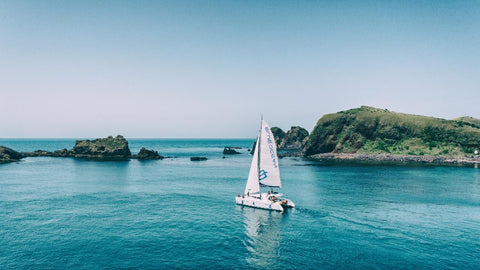
See the Exciting Sculptures in Jeju Stone Park
Jeju Stone Park is an outdoor museum made of stone sculptures that explore the history of Jeju Island. According to local legend, Grandma Seolmundae, who had 500 sons, created the island. After a tragic accident during which Grandma Seolmundae passed away, the sons all turned into stones in their grief. Those interested in learning more about the formation of the rocks can explore the Jeju Stone Museum. Additionally, a village of traditional stone houses is located at Jeju Stone Park, which takes about an hour to explore.
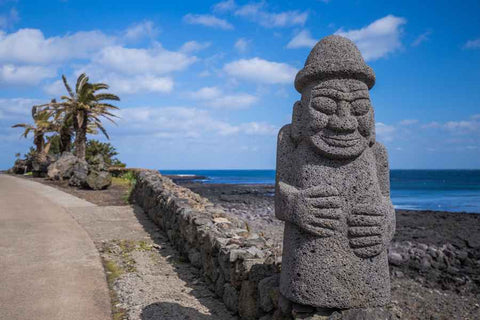
Hike Up Seongsan Ilchulbong Peak for Sunrise
Seongsan Ilchulbong Peak, also known as Sunrise Peak, is another of the best things to do on Jeju Island. It's one of the most popular places on the island to hike, especially if you want to see a stunning sunrise. This Unesco World Heritage Site offers stunning beach and cliff views. After hiking and viewing the sunset, a trip to Black Sand Beach is a must. Here, you can watch the famous haenyeo fish.
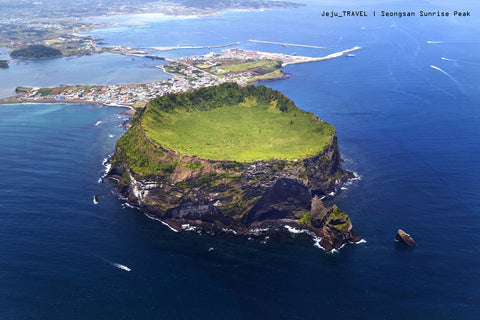
See the Majestic Jeongbang Waterfalls
This activity offers a unique experience for travelers as Jeongbang Waterfalls is the only waterfall on the continent that goes directly into the sea. According to legend, these famous waterfalls hold curative water. However, it's discouraged to swim at the base of the falls due to the slick rocks. Jeongbang Waterfalls offer stunning cliff, sea, and fall views. Visitors can hike to the top of the waterfall or enjoy the views and refreshing mist from the base of the falls for a small fee.
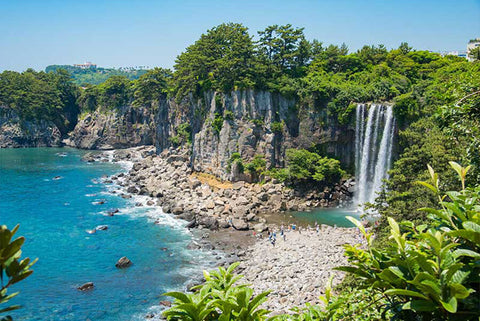
Trek Through Hallasan National Park
Here, you'll find the famous Hallasan Mountain, which stands at 6,398 feet tall. Experienced hikers can hike to the top of the peak via a seven-hour route. Other hiking trails, with different lengths and difficulties, are available throughout Hallasan National Park. As you explore this stunning park along the Southern Coast of Jeju Island, keep an eye out for birds and other wildlife. This park is also home to Gwaneumsa, the oldest Buddhist temple in Jeju.
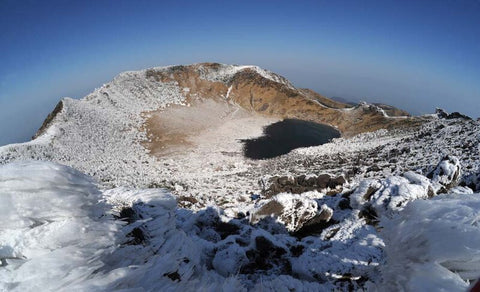
Visit the Jeju Folk Village Museum
Those interested in learning about Jeju Island's history can head to the Jeju Folk Village. This reconstructed village holds 100+ homes and buildings, which residents of the islands once occupied. The buildings have been meticulously reconstructed after thorough research. At this village museum, you can explore what living on Jeju Island in the 1890s would be like. This attraction is great for families and history buffs.
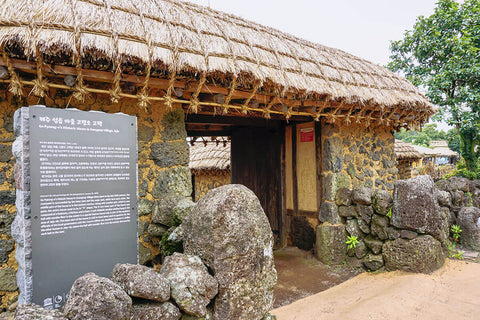
Spend the Day at the Idyllic Hyeopjae Beach
Besides forests and volcanoes, Jeju Island is also famous for its incredible beaches, like Hyeopjae Beach. This stunning beach lies on the western side of Jeju Island, in Hanrim Park. It gets its ultra white sand from the many crushed-up seashells that have mixed with the sand over the years. The stunning seashore extends about 65 feet and aligns with brilliantly blue water. The beach is also bordered by lush forests, providing a nature paradise for visitors. Additional activities are available at Hanrim Park, like tours of the Hyeopjaegul and Ssangyonggul Caves.
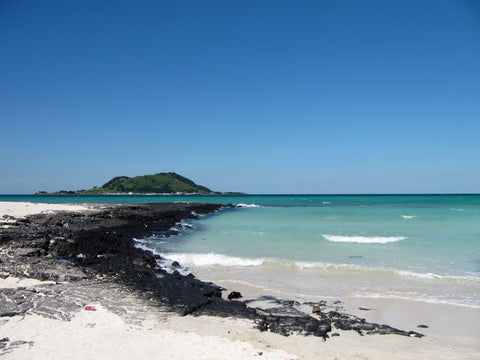
Taste Your Way Through the O'Sulloc Tea Museum
Tea lovers will want to visit the O'Sulloc Tea Museum, a site dedicated to the Korean tea tradition. Here, you can learn about tea artifacts, growing tea plants, how tea is packed, and more. This museum also overlooks the O'sulloc's Seogwang Tea Plantation, offering a behind-the-scenes view into tea cultivation.
The museum hosts workshops that explore tea in more detail. For example, you can enjoy a workshop that takes you through the tea fields, sip on tea cocktails, or learn more about the island's history, present, and future. Don't forget to stop by the gift shop or try the food/drink offerings at the O'Sulloc Tea Museum (like the green tea ice cream).
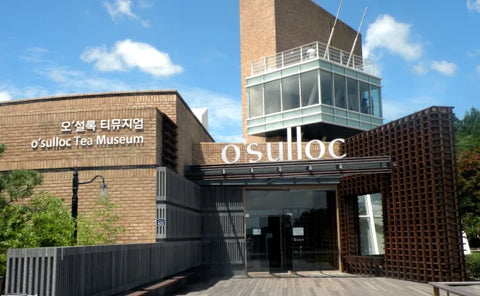
Head to Innisfree Jeju House
A visit to Innisfree Jeju House is one of the best things to do on Jeju Island for skincare lovers. Here, visitors can purchase Innisfree natural skincare products at discounted prices. Additionally, there are two cafes worth checking out. These cafes are famous for offering unique food, like the Mt. Hallasan Cake. Like the Innisfree skincare brand, the cafes focus on natural ingredients for their offerings.
Workshops, like their soapmaking course, are often available at Innisfree Jeju House. The building is located next to a tea plantation, which offers stunning views as you enjoy a meal and local tea offerings.
This list is only a few of the many attractions and activities available on Jeju Island. Ensure you make time to visit other areas around the island, like Jeju City and Udo Island, as they're just as spectacular as the rest of Jeju Island.
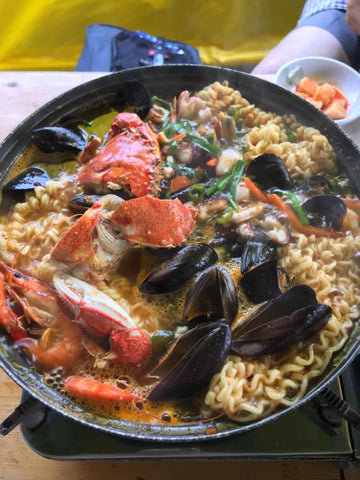


Check out our blog for more information on Jeju Island and its offerings.

